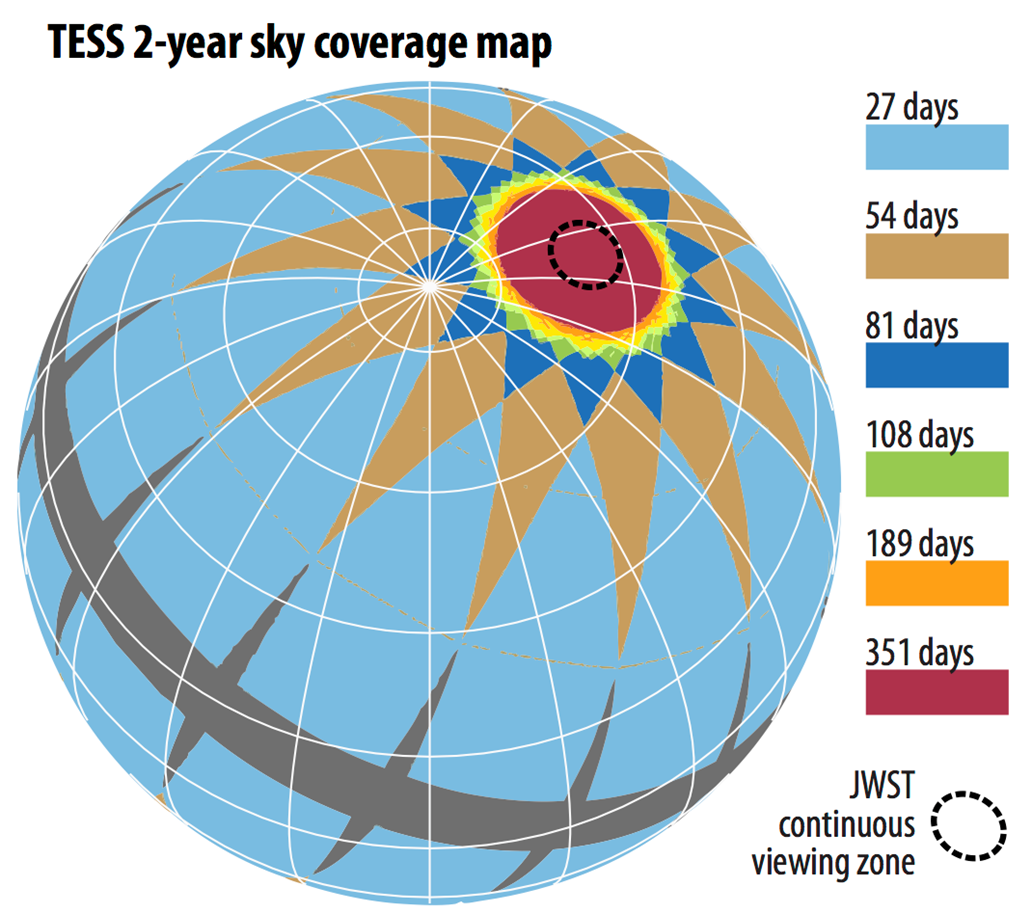天空中那跳动的心 ∙ 下篇Pumping Hearts of the Sky Part II
在上篇中我们了解了研究δ Scuti星振动频率的重要性,以及研究中的数据采集和模拟。
那下一步便是对数据模型进行分析和理解啦!
然后找到我们的答案啦!
Previously we have seen the importance of studying δ Scuti stars, and how the data is gathered and used. So, the next step now is to analyse the data and study the results!
Then we will find our answers!
新模拟的改变
What’s changed?
这60 颗 δ Scuti星只占恒星研究总数的很小一部分,那么,为什么规律频率的振动如此罕见?科学家们表示有两种可能性。
These 60 δ Scuti stars only make up a small fraction of the total number of stars studied, so why are oscillations happening in regular frequency for them so special? The scientists have two potential theories.
首先,将这些样本恒星与所有恒星的进化轨迹进行比较后,我们看到它们都处于恒星生命的早期阶段,而这可能就是他们特别的原因。随着恒星的演化,它们在地表附近的振动模式将会和核心的振动模式相互影响,从而破坏了原有的规律振动。
First, comparing these sample stars to the evolutionary tracks of all stars, we see that they are all in the very early stage of their stellar lifetime and that might be the reason. As stars evolve, their modes of oscillations near the surface will interact with the ones in the cores, hence disrupting the original regular patterns.
就像一个孩子步入青春期一样,新的世界观、新的生活和不稳定的荷尔蒙结合在一起,使他们变得叛逆。所以,在恒星世界中,这个样本中的60颗恒星可能只是比开普勒观测到的要年轻。
Just like kids becoming teenagers, the new views of the world, new lives and unstable hormones all combining and making them rebellious. So, in the stellar world, stars in this sample might just be younger than the ones observed by Kepler.
图为60颗δ Scuti星在赫罗图上的分布位置,图中红线代表了不同重量的主序星在他们的生命中会走过的轨迹,黑线为他们起始区域。黄色、绿色和蓝色小点代表了着60颗恒星现在的情况,由此可见现在他们年龄都相对较小
The 60 δ Scuti stars on the Hertzsprung-Russell diagram. The red lines show the paths main sequence stars would take depending on their masses and the black line being the starting position. The coloured dots represent the 60 stars, which can be seen are all at early stages of theIr lifetime.
其次,科学家们认为恒星在太空中的方位也可能会影响到我们获取的数据。δ Scuti星通常转速非常快,可以达到太阳的12倍。因此,快速旋转会使振动模式发生分裂,破坏监测到的规律振动。但条件是我们看到的恒星正在转动,如果我们从极点上看恒星,它的旋转将不会影响我们的数据。
Second, the scientists think the star’s orientation in space maybe affect the data captured. δ Scuti stars typically rotate very fast, 12 times the Sun. So, the fast rotation can split modes of the oscillation and disrupt the evenly spaced frequency. However, that is only if we see the star in a rotating motion, if the star is viewed pole-on, it’s rotation would no effect on our data.
为了查看第二个推论是否有效对那60颗δ Scuti星有效,科学家团队使用了光谱仪来检测恒星相对于地球的倾斜角。在对所有60颗恒星进行测试后,结果显示,这个样本中的许多恒星都是在从极点上被观察的。因此,很有可能这些恒星有规则的振动间隙是因为观察中快速的旋转没有影响到数据。
To check if the second reasoning is valid for those 60 δ Scutis, the scientist team used spectrographs to find the change in inclination of the stars relative to the Earth. After testing all 60, the results showed that many of the stars in this sample were viewed pole-on. Hence, it is very likely that these stars were observed with regular spacing was because the fast rotations were not seen.
摄谱仪,也被称为光学光谱仪,是一种使用电磁波(如红外线、紫外线、x射线等)来测量光的特性的一种仪器。它将来自被测量物体的光(这里就是我们的δ Scuti星)进行分裂,让光波分散成不同的波长。
Spectrograph, also known as optical spectrometer, is an instrument used to measure properties of light using electromagnetic waves (e.g.: infra-red, ultraviolet, X-ray). It splits and disperses light from the object, in this case the stars, into component wavelengths.
光波的分裂对于不同的物质来说是独一无二的,所以可以从它们波长组合识别出这种物质。而知道了恒星发射的不同波长组合就可以计算出恒星的旋转速度。
The splitting would be unique for different materials, so analysing the wavelengths recorded would identify the material. Knowing wavelength can be used to calculate the speed of rotation for stars.
图为太阳的‘条形码’ - 由NOAO光谱仪测出的吸收光谱。图片是由一条极长的光谱裁剪叠加而组成的。图中黑线的位置仅限于我们的太阳,任何其他恒星都会有不一样的黑线位置
The Sun's barcode - the absorption spectrum from NOAO's spectrometer. The pictures is made from a long spectrum divided and displayed on top of each other, the distribution of black lines is unique for the Sun, other stars would have different distributions
未来的命运
The future of δ Scuti stars
随着对这些恒星中规律间隙振动的逐步了解,科学家们现在能够确切地确定各种振动属于哪一类,并给予比较。它大大增加了恒星模型之间比较的细节程度,这些细节是在了解δ Scuti星之前不可能的。
With the new understanding of regular spacing in oscillations in these stars, the scientists are now able to identify exactly the category the oscillation belongs to. It helps greatly with giving more details on the comparisons between stellar models, which was never possible for δ Scuti stars before.
例如,它可以用来更精确地确定年轻运动群、星团和恒星流的年龄。在此之前,取决于不同的计算方式,计算得到年龄可能相差2倍,所以这些δ Scuti星的新研究可以很大程度上降低原来的不确定性。
For example, it can be used to for determining the ages of young moving groups, clusters and stellar streams. For them, depending on the method used, the age calculated can vary up to a factor of 2 (2 times larger or smaller), so these new studies with δ Scutis can very much lower the uncertainties.
另一个特别好的例子是HD 31901,它是最近发现的恒星流 - 双鱼星流的一员。利用科学家们最新测量的振动频率,他们发现这颗恒星的年龄在1亿至1.5亿岁之间。这一结果与用旋转年代学估算所做的测量结果一致,旋转年代学估算是利用恒星的自转率来定位恒星的方法。由此证明,δ Scuti星的新分析非常有用。
Another particular example is HD 31901, a member of the recently discovered stellar stream - Pisces–Eridanus. Using the scientists’ newly measured oscillation frequency, they find that the age of that star is 150 ± 100 million years old. This result agreed with the measurement made with gyrochronology estimates, which is method of determining stars using their rotational rates. So again, proves the usefulness of the new analysis with δ Scuti stars.
图为Jon Lomberg的恒星流模拟图,恒星流是一个环绕着一个更大星系(比如银河系)的卫星星系的残骸
An illustration of stellar stream from Jon Lomberg, stellar streams are the remnant of satellite galaxies wrapping around a larger galaxy like the Milky Way
发现δ Scuti星仅仅是星震学中革命的开始,随着TESS和盖亚对我们宇宙的不断深入了解,更多关于δ Scuti星的秘密会被发现,揭示更多的模型和理论。
This is only the beginning of the revolutionary discoveries with δ Scuti stars, as TESS and Gaia look deeper into the space, more δ Scuti stars would be discovered, revealing more patterns and theories.
麻省理工(MIT) Kavli天体物理和空间研究学院的George Ricker博士,作为TESS的负责人之一,说:“我们很激动,全世界的天文学家正在使用TESS数据来加深我们对恒星的认识。这些发现为更好地了解整个恒星类别开辟了全新的视野。”
Dr. George Ricker from the MIT Kavli Institute for Astrophysics and Space Research, who is the principle of TESS said:" We are thrilled that TESS data is being used by astronomers throughout the world to deepen our knowledge of stellar processes. The findings have opened up entirely new horizons for better understanding a whole class of stars.”
那就让我们期待
星震学带给我们的奇迹吧!
Let us wait for
the magic asteroseismology brings us!
图为TESS两年里的天空覆盖图,它把天空分成了26个区域,第一年观察南半球,第二年观察北半球
TESS 2-year sky coverage map, it divides the sky into 26 even section, observing the southern hemisphere in the first year and the northern hemisphere in the second
图片来自 ASP, ESO, TESS, MIT, Scitechdaily, NASA官网
部分信息参考来自的悉尼天文研究所团队的 “Very regular high-frequency pulsation modes in young intermediate-mass stars"论文
Pictures from official website of ASP, ESO, TESS, MIT, Scitechdaily, NASA.
*Parts are from “Very regular high-frequency pulsation modes in young intermediate-mass stars" by the scientist team from Sydney Institute for Astronomy




